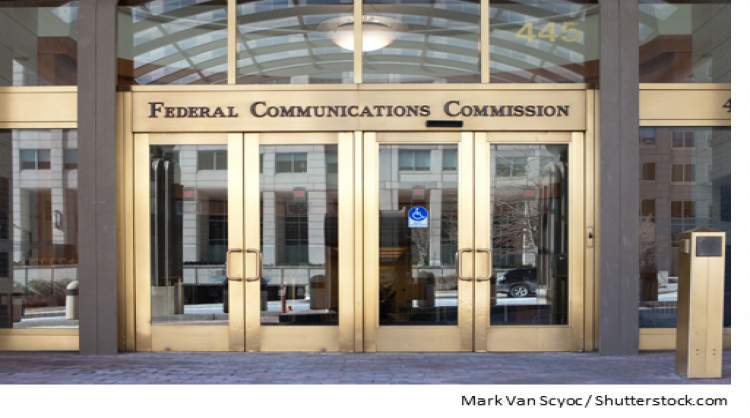FCC Proposes Massive Cuts to Lifeline Program
November 24, 2017 | by Andrew Regitsky

The ever-growing partisan split at the FCC hit new levels of acrimony last week when the FCC on a 3-2 vote decided to immediately limit Lifeline benefits to rural Tribal areas. While that was controversial enough, it was a proposal to limit Lifeline participation to facilities-based providers only that caused the two Democratic commissioners to see red. Here are the details:
Lifeline is part of the Universal Service Fund and is administered by the Universal Service Fund Administrative Company (USAC). The program works by providing low-income Americans with a monthly dial-tone line discount. Specifically, it provides a subsidy of up to $9.25 a month for Americans below 135% of the poverty line. Lifeline is available to eligible low-income consumers in every state, territory, commonwealth, and on Tribal lands. Tribal customers are also eligible to obtain $25 per month in additional subsidies.
In its Fourth Report and Order last week in Docket 17-287, the Commission decided to immediately limit the "enhanced" Tribal Lifeline support of $25 per month by making this additional subsidy available to rural areas only and for services provided only by facilities-based providers. The Commission too this action to "avoid waste." In defending this decision, the agency explained that enhanced support is not needed in urban areas to make service affordable or to promote broadband deployment.
This action was blasted by the two Democrats, but it was the Commission's Notice of Proposed Rulemaking (NPRM) in the same docket which clearly infuriated them. In the NPRM, the Commission sought industry comments on the following proposals:
- Spur investment in deployment and reducing waste, fraud, and abuse by limiting Lifeline support to facilities-based providers;
- Protect the program by restoring the traditional role of the states in approving participation of Lifeline-eligible providers;
- Protect ratepayers, who pay for Lifeline through an assessment on their phone bills, by setting a self-enforcing budget cap on the program;
- Improve provider incentives to offer high quality services by establishing a maximum discount level for Lifeline-supported services
FCC Chairman Republican Ajit Pai claimed the Commission had no choice but to take these actions to "fix" the Lifeline Program.
This past summer, the Government Accountability Office (GAO) published a report identifying deeply disturbing problems with the Lifeline program. For example, GAO discovered 1,234,929 Lifeline subscribers who apparently were not eligible to participate in the program as well as 6,378 individuals who apparently reenrolled after being reported dead. That limited sample alone constituted more than $137 million in abuse each year. Just two months ago, the U.S. Senate Homeland Security and Governmental Affairs Committee asked me to testify at a hearing entitled “FCC’s Lifeline Program: A Case Study of Government Waste and Mismanagement.” The message I heard was clear, urgent, and bipartisan. Among other members, Chairman Johnson and Ranking Member McCaskill declared that Lifeline’s problems are serious and persistent—and the time for action is now. As Ranking Member McCaskill put it, “the idea that we can continue a program that is still structurally deficient, in the same way we have been doing it, is frankly a non-starter for me...We take a hard look at wireless resellers—the group of Lifeline providers that have been the subject of the vast majority of Commission investigations for waste, fraud, and abuse. And we finally propose to adopt a real, self-enforcing Lifeline budget for the first time. Some say that the Lifeline program is too important to have a meaningful budget. I say it’s too important not to have one. (Docket 17-287, Statement of Ajit Pai).
But Democratic Commissioner Mignon Clyburn was having no part of that. She believes many low-income consumers will be harmed by the Commission's proposal to limit Lifeline to facilities-based providers because in many cases only wireless resellers offer them the telephony services they need and can afford.
There is a simple question, I fear, that is too rarely asked in these quarters: Just who is a Lifeline subscriber? According to survey data, it is a she. She makes $14,000 per year. She is middle-aged, single, and has a child within her care. She is trapped in systemic poverty and she has picked the only device and telephone plan she could afford. Or to state it more boldly, the plan has picked her. That service is delivered primarily by a wireless reseller because she can only afford one form of communication. That service enables her to call 911; that service allows her to speak with her child’s educators, and help her child with her homework; and that service enables her to stay on top of her fulltime, or multiple part-time, but all too often dead-end minimum-wage shift schedule. And just what has the FCC majority teed up for her today, in the final order that was circulated after this meeting was called to order: a more efficient, user-friendly means to bridge the communications divide? No. Before us is a carefully crafted proposal which is more likely to rip that phone from her hands, than provide her with enhanced service. (Docket 17-287, Dissenting Statement of Mignon Clyburn.).
The final text of these proposals has not yet been made public. However, the Commission's actions here to limit the Lifeline Program as well as the soon to come partisan decision to completely dismantle the net neutrality rules means that it will be a bitter partisan holiday season at the FCC with next year looking no better.

